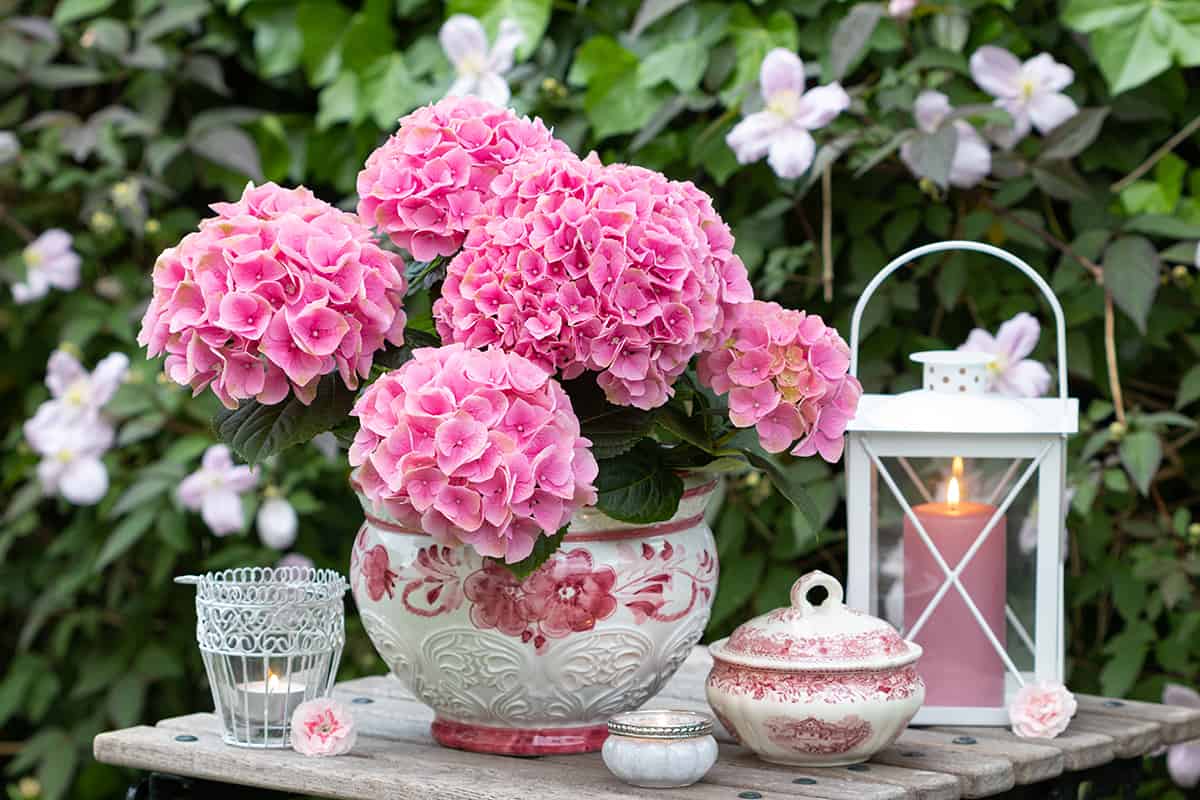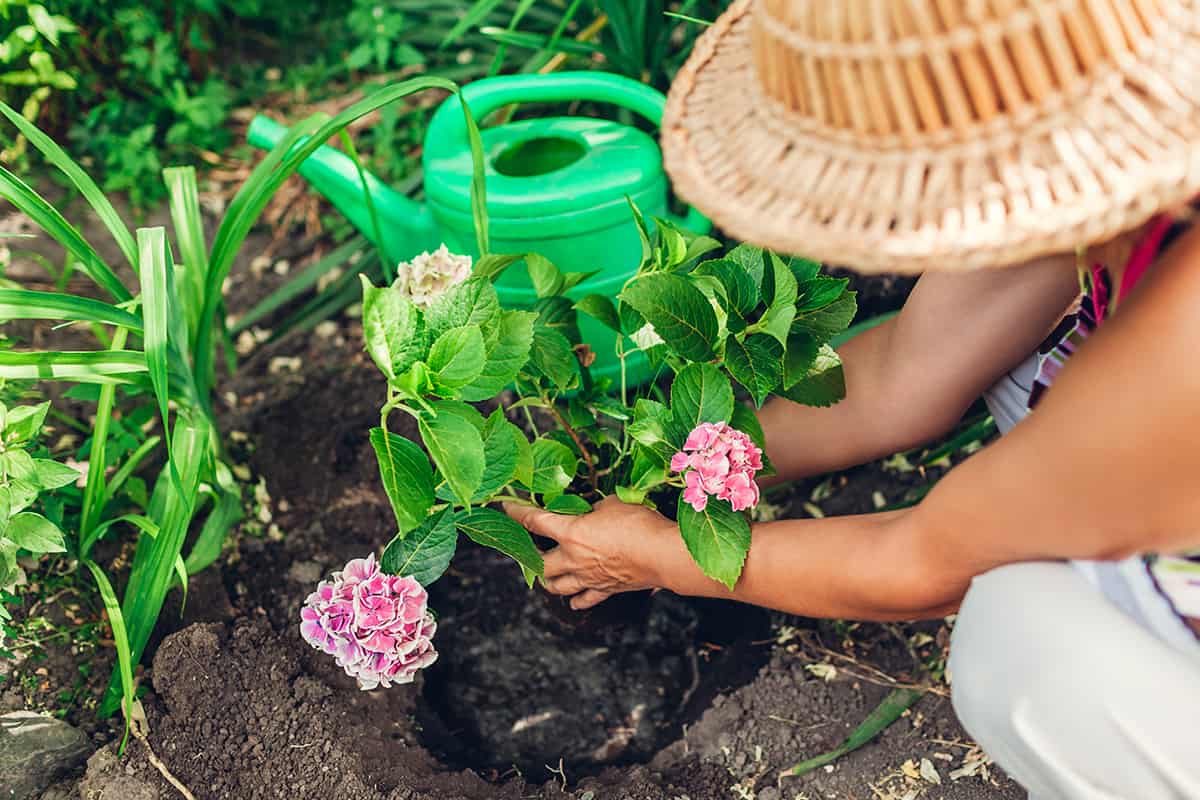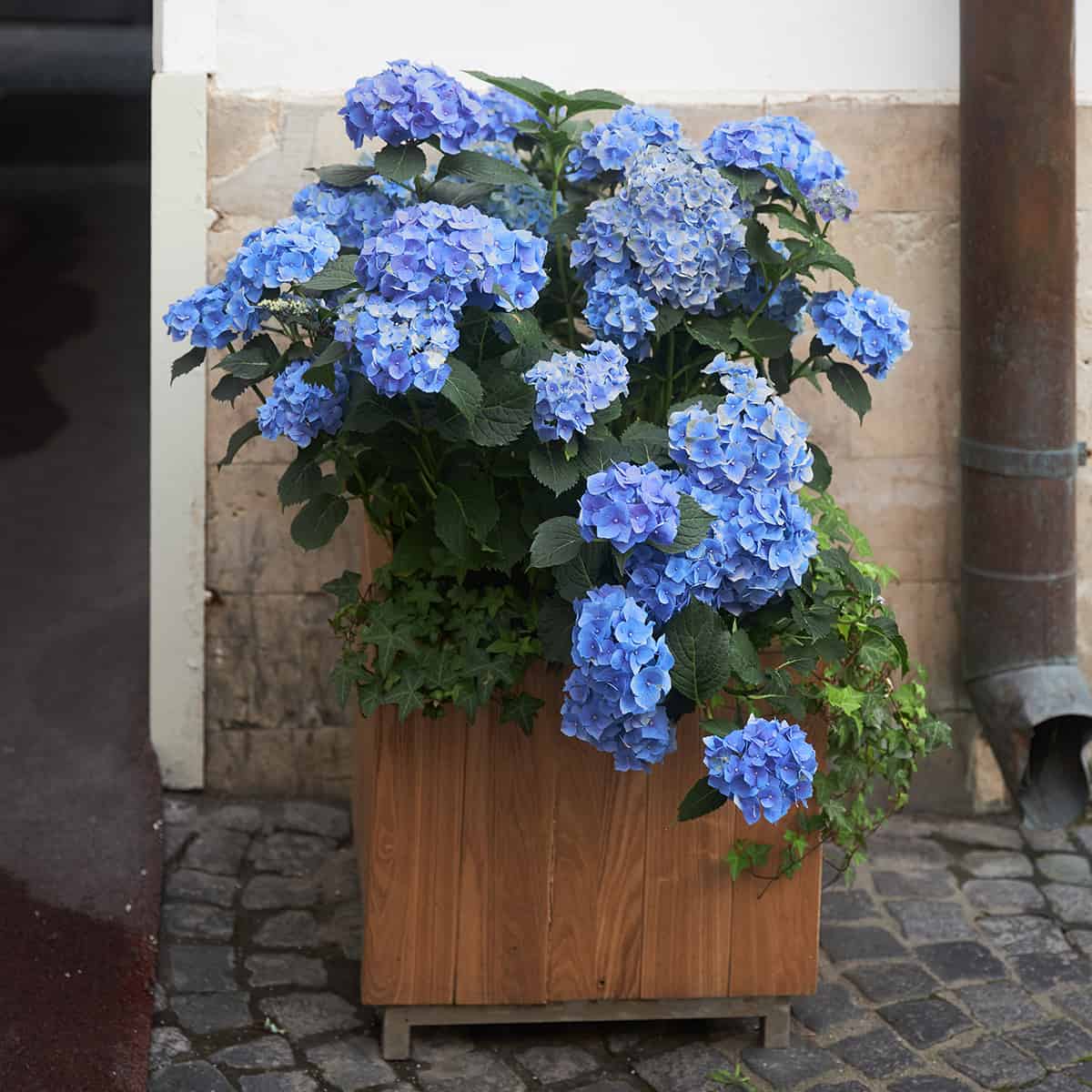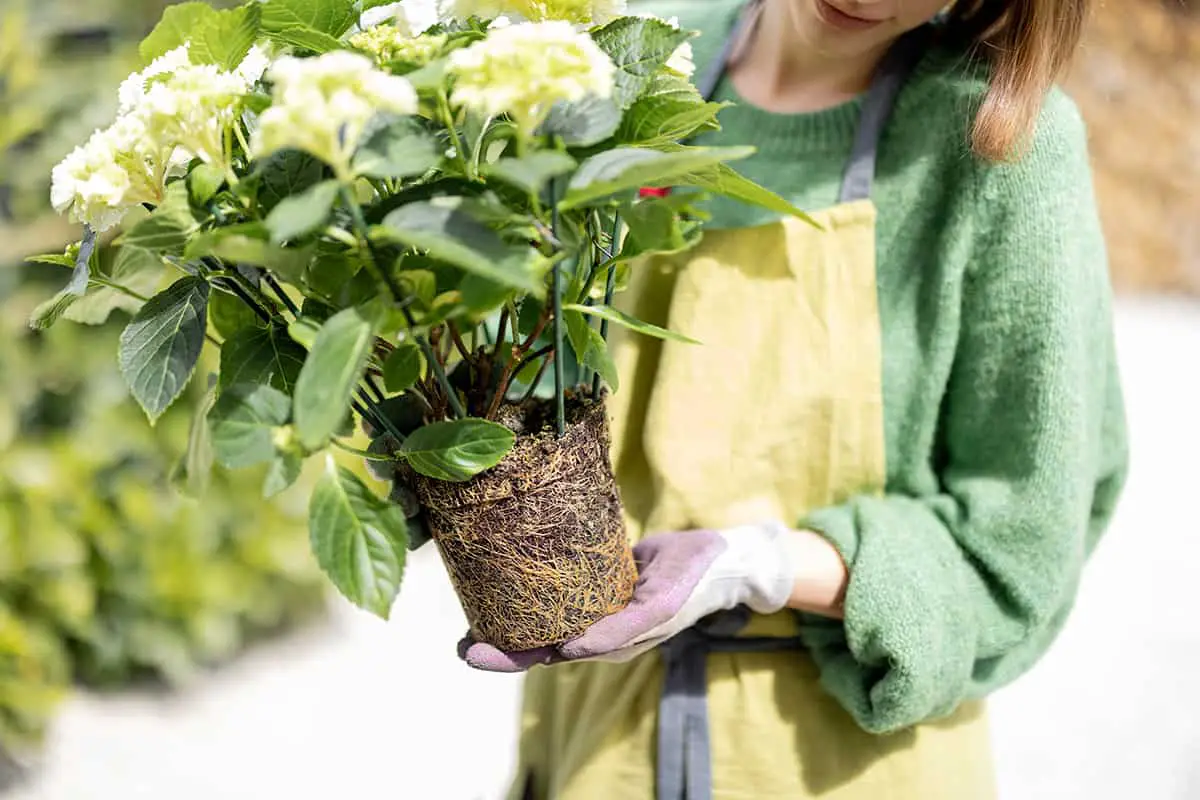Hydrangeas are deciduous, flowering shrubs that can grow anywhere from 3 feet to 12 feet in height. As medium to large-sized shrubs, you might assume that the root systems of these plants bury deep into the ground to anchor them. Interestingly, the roots of a hydrangea plant actually remain very close to the surface of the ground.
For most types of hydrangeas, their root systems will remain within the top six inches of the soil. This makes a hydrangea root system remarkably shallow considering the size of the plant. In terms of width, the roots of hydrangea will typically spread horizontally as far as the drip line of the plant.
This means that the size of the roots will not extend beyond the width of the above-ground portion of the hydrangea.
Table of Contents
Keeping Hydrangea Roots Healthy

Watering schedule
Hydrangeas need plenty of moisture, especially when grown in southern climates. During spring and summer, you can expect to water the plant at least once a week, in the absence of rain. When watering hydrangeas, do so deeply and thoroughly. As the moisture seeps down further into the ground, this should encourage the roots of the plant to dive further into the earth to seek out the moisture.
If you are concerned that your hydrangea is suffering from stress due to a lack of moisture, you can water it more frequently, for example every other day. However, some gardeners recommend that frequent light waterings of the hydrangea be avoided, as this keeps the moisture in the upper layers of the soil, and encourages the plant to maintain a shallow and weak root system.
Moisture retention
As lovers of moisture, hydrangeas benefit from mulching over the soil which can help to encourage moisture retention. By adding a layer of mulch to the ground, the moisture in the soil will not evaporate as easily, which means more moisture is available for the roots.
Mulching the soil will help to stop the soil from drying out too quickly, especially in hot weather, which in turn will help to reduce stress on the plant and enable it to grow strong and healthy. Hydrangea plants typically prefer growing in full sun, and this means that they lose a lot of moisture during the day through their leaves.
This is especially true for large leaf varieties, which have a big surface area covered with pores that seep out moisture throughout the day. This is another reason why using moisture retention methods is important for the health of the plant. Without adequate moisture, the hydrangea will have stunted growth, and ultimately die back.
Climate control
Hydrangeas can suffer from extreme temperature changes to their roots. This can be minimized by mulching over the soil since this will add a layer of insulation. Mulching helps to prevent the soil from freezing in the winter, and it also helps to keep it cool in the summer. Avoiding harsh temperature changes is one way that you can aid your hydrangea roots in staying healthy.
How Much Space do Hydrangea Roots Need?

Hydrangeas can grow to heights and widths of up to 12 feet, though there are many varieties significantly smaller than this. Some hydrangeas will reach a mature width of just 2 feet. It’s important when planting hydrangeas to understand how far their roots spread, as this will help you to decide how close to plant the shrub to other plants.
The roots of a hydrangea will not usually extend beyond the drip line of the plant. This means that if you allow enough space around the hydrangea to reach its expected width, then it will also have enough space below ground for its roots. Planting hydrangeas in a way that allows them enough space means that they won’t have to contend with competing roots of other plants for moisture and nutrition.
As the roots of a hydrangea are shallow, and sometimes weak, you should give them the best chance of growing to be strong by not forcing them to grow too close to other plants which will compete for space and moisture. If a hydrangea is expected to reach 6 feet in width, for example, then allow a gap of 6 feet in between the hydrangea and the next hydrangea. Don’t plant the hydrangea close to other shallow-rooted plants, or near plants with aggressively spreading root systems.
Hydrangea Root Systems Explained
The root system of a hydrangea plant is made up of rhizomes, from which smaller, more fibrous roots emerge. Rhizomes are also known as root stalks, and they grow horizontally under the ground.
Fibrous roots are sent out from these rhizomes, which grow vertically. It is the fibrous roots that seek out sources of moisture and nutrition within the soil.
Can Hydrangeas Grow in Containers?

Although you may not consider a shallow root system to be particularly advantageous, it does mean that hydrangeas are well suited for growing in containers. As they do not have a central taproot that needs to be grown in deep soil or an aggressive root system that buries itself into the depths of the soil, hydrangeas can grow happily in containers.
A container for a hydrangea plant does not need to be especially deep, instead, as long as it can accommodate a root system to a depth of around 6 inches, it will work well.
Are Hydrangea Roots Invasive?
Another benefit of a hydrangea having shallow roots is that the plants will not become invasive. This means you can position your hydrangea plant quite close to a building without the worry that the roots are going to cause structural damage.
Many types of hydrangea will not exceed between 4 and 6 feet in width, and their roots do not typically grow beyond the plant’s drip line. This means that as long as the hydrangeas branches are not touching a nearby building, then the roots will also not be creeping close to the building beneath the ground.






